
Black Ships & Samurai, Lesson 01
Introduction to Reading the Visual Images
in Black Ships & Samurai
Introduction
Three short guided lessons introduce students to the idea of “reading” a visual image as a historical text—in this case, as historical documents that capture aspects and attitudes about the first U.S.-Japanese encounters in 1853 and 1854.
National History Standards
Objectives
At the conclusion of this activity, students will be better able to:
1. Discuss ways in which a visual image qualifies as a historical document and can be “read” and analyzed in much the same way as a written text.
2. Apply guided questions for close reading to one or more visual images.
3. Discuss advantages and disadvantages to relying on information from any single source, including a visual image.
4. Identify the “narrator’s voice” in a visual text.
5. Apply their knowledge by developing question sets to guide the close reading of a visual text by others.
Materials and preparation
• Student access to the Black Ships & Samurai unit
• PowerPoint or Word
• Access to a printer
• Handout 01-A or 01-B (available online or printed and copied for students in advance)
Activity One: Comparing and Contrasting Visual Records of the Same Event
1. The links below will take the class as a whole, or students working in pairs, to paired images within the Black Ships & Samurai unit.
A:
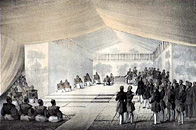
B:
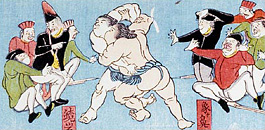
C:
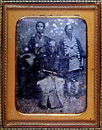
D:
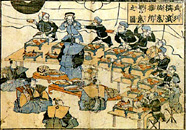
E:
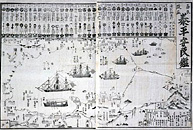
F:
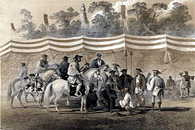
G:
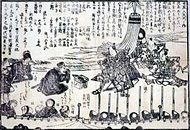
H:

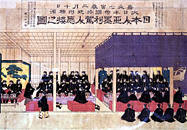
If conducting the visual analysis as a full class, project images on a class screen. View one image in the paired set at a time. Discuss questions in Handout 01-B.
If a small group activity, distribute Handout 01-B and have students work in pairs to find
5-10 parallels in the two images.
Find 5-10 contrasts—aspects of the event or scene that are represented differently.
Student pairs then work to find a theme for the paired images and develop 10 analysis questions to ask other students about these paired images.
Activity Two: Looking for Patterns of Data Across Prints
Assign students the task of working in pairs to identify 5-10 images from the Black Ships & Samurai unit that convey information about Japanese clothing at the time of the Perry expedition and 5-10 images of Western clothing. Students should then apply the data about clothing in the images to make hypotheses about the different roles and occupations of the Americans on Perry’s expedition and, similarly, about the Japanese living outside Tokyo in 1853. Have groups present their hypotheses about the occupations and roles through a PowerPoint presentation.
Massachusetts Institute of Technology © 2008 Visualizing Cultures
